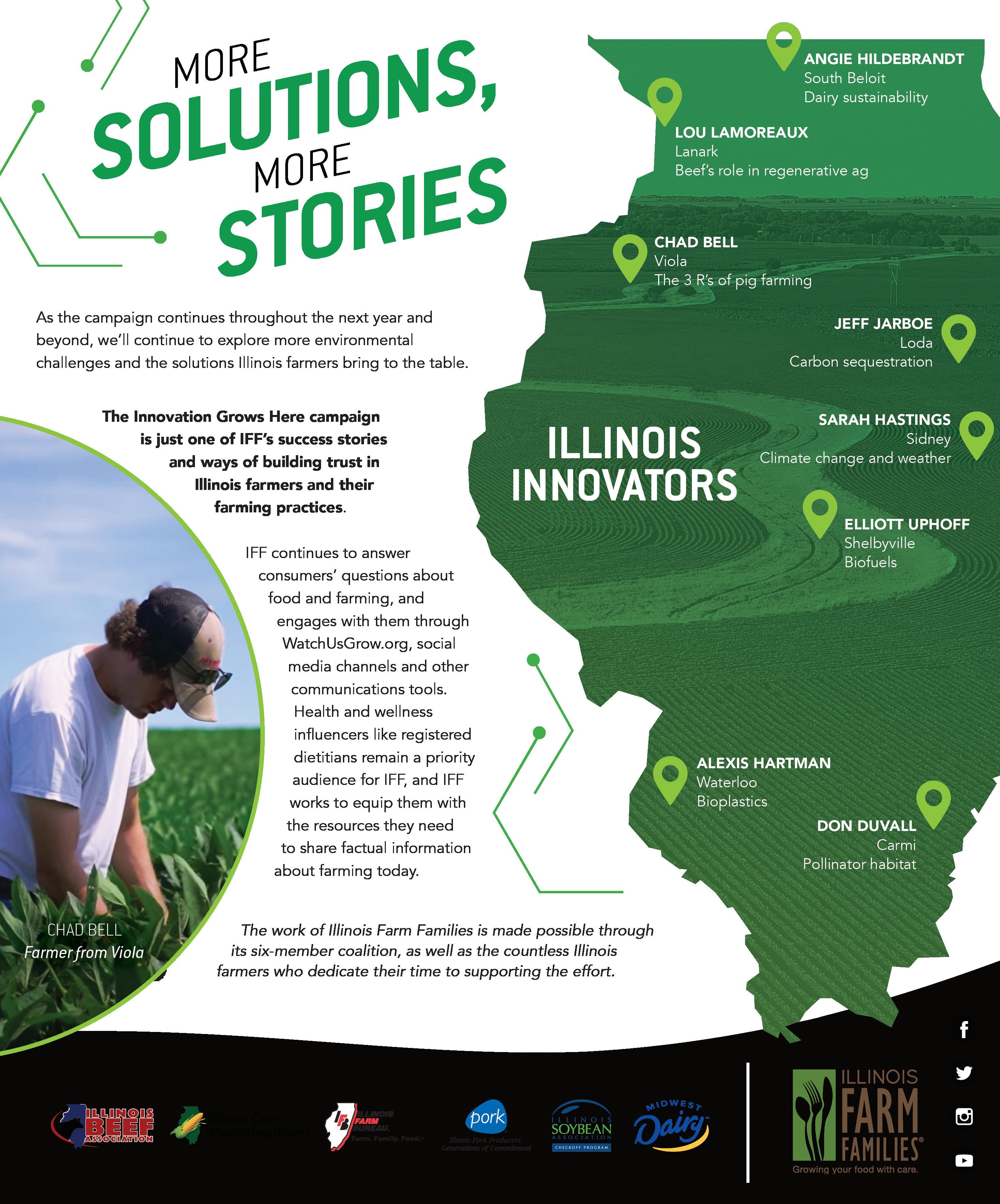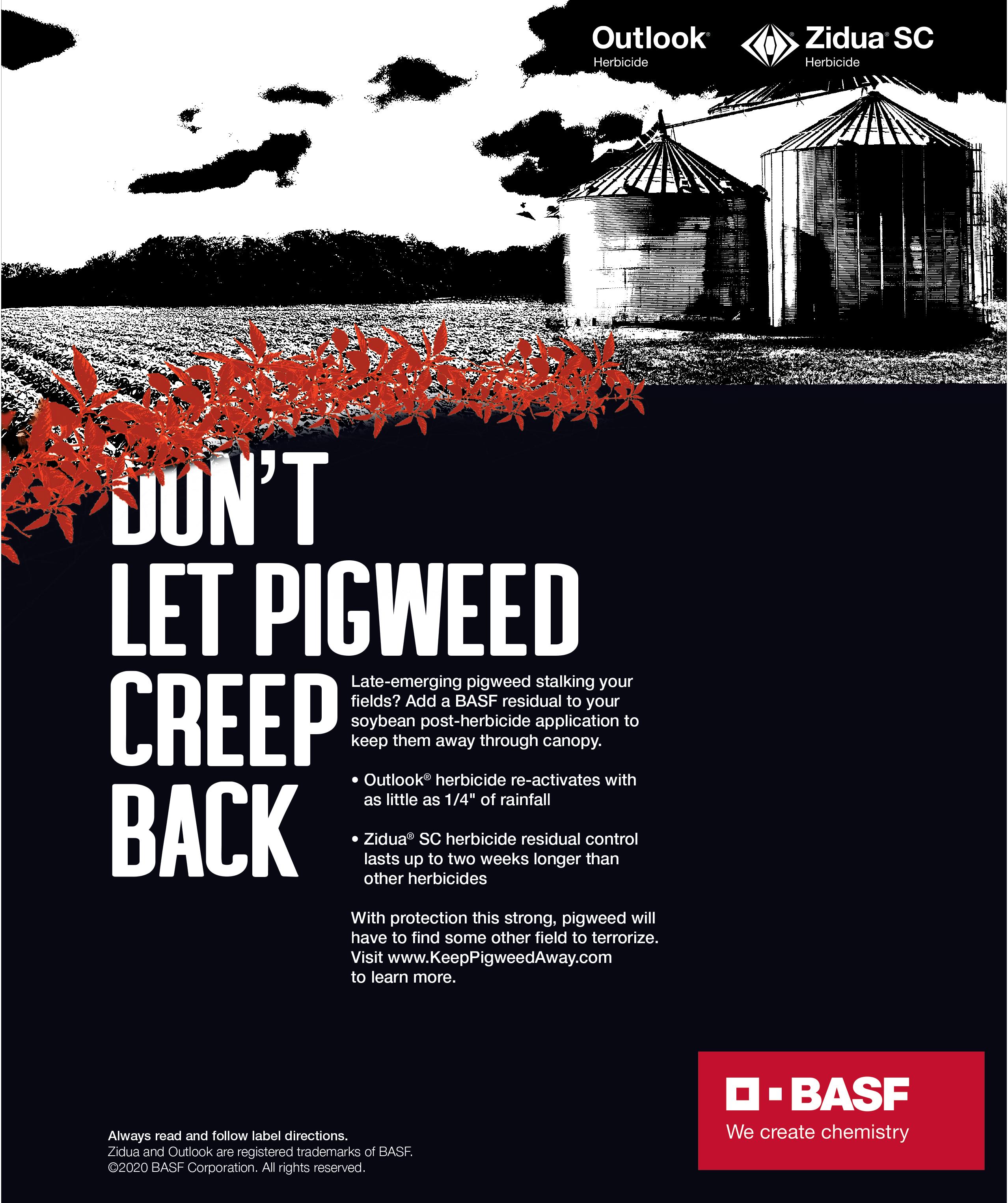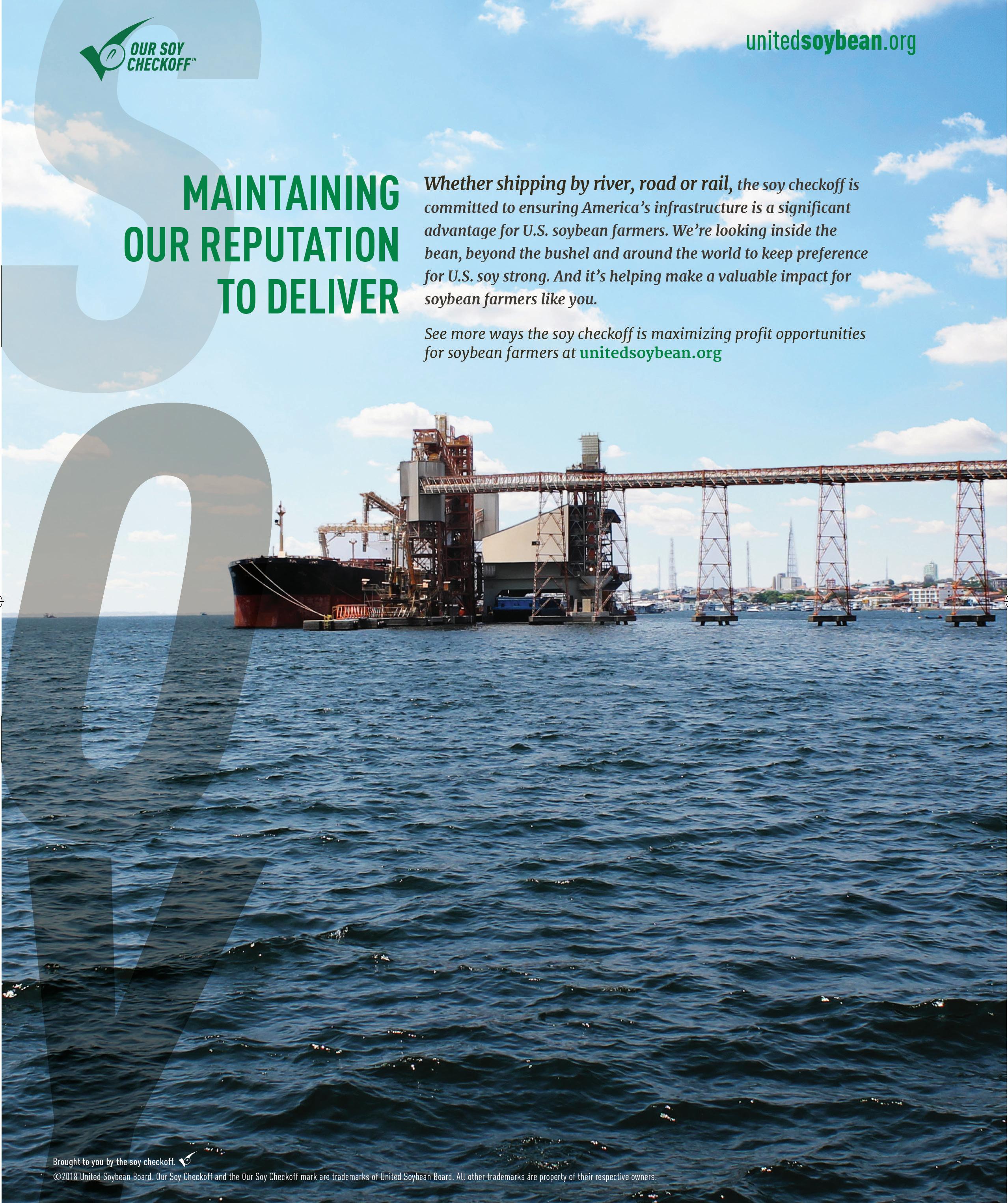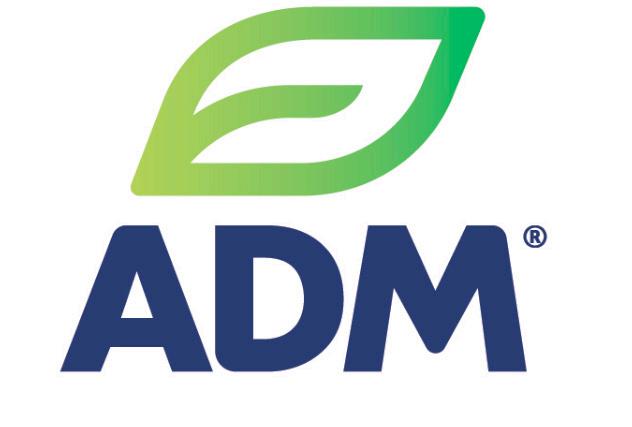
7 minute read
Where imaginations are brought to life
Get an inside look at how the University of Illinois’ AgTech team is using mind-bending science, research, engineering, and creative partnership to improve life for the American farmer.
By Betsy Osman
Right now, there is a group of people talking about you. They’re talking about how hard you’ve worked this year, what growing conditions you’ve endured, what successes you’ve seen, and what’s kept you awake at night. They’re developing new ideas, testing audacious theories, and wondering over coffee what they can do to better meet your needs.
These people might not know your name, but they know your story. And they’re working for you. They are the University of Illinois’ AgTech Team, the fastest-growing division of Research Park.
This program is a fascinating collaborative effort that seamlessly weaves together science, research, engineering, resources, and talent. An innovation hub styled for technological advancement, this is the place where imaginations are breathed into life.
Their close proximity to Illinois soy agriculture, coupled with the University’s rich resources and academic backing, has enabled AgTech to closely immerse themselves in the farmer experience.
“This program was built to help more technologies get from research bench scale to farmer implementation in the areas of new ingredients, fuels, and commodity chemicals," says Beth Conerty, Business Development Manager for Integrated Bioprocessing Research Laboratory (IBRL). "We support clients looking into new applications or new technologies that use commodity crops in hopes that more of these developments can be proven at the pilot scale.”
This home for disruptive technologies is doing more than creating insular silos for research and development, housing entrepreneurial ventures and corporate partnerships, and playing with prototypes. The AgTech team is creating innovation models for identifying novel problems and solutions by aligning themselves with companies dedicated to value-added farming technologies, and then handing off those new technologies to those who will apply them for real world application.
“The AgTech ecosystem has been a critical part in how and why we’ve made such rapid progress,” says Chinmay Soman, Co-Founder and CEO for Earthsense, a company dedicated to creating new possibilities for crop breeders, plant protection products developers, crop scientists, and field agronomists through the use of robotics.
Their first robot, TerraSentia, was born to improve the quantity, accuracy, cost, and speed of infield plant data collection, especially for under-canopy traits that can’t be seen with aerial viewing.
“We started Earthsense to figure out how we could address some of the most pressing issues in agriculture. We wanted to understand the problems deeply and create specific solutions that
Photo credit: Earthsense
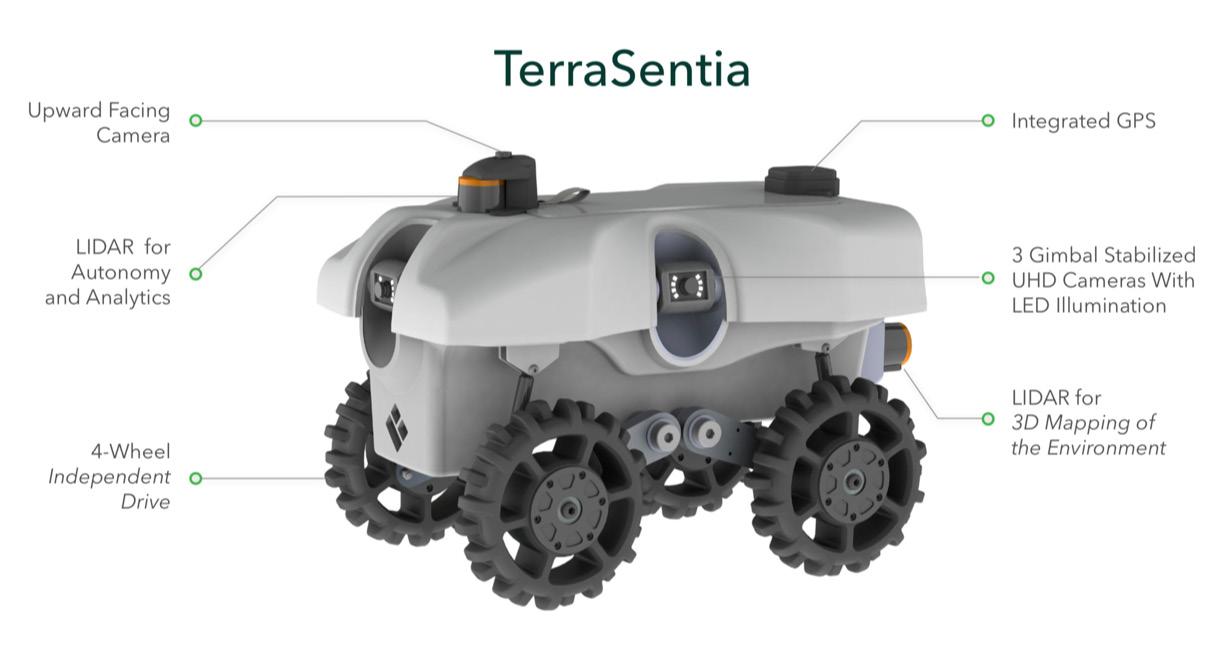
directly help farmers as soon as possible.”
Earthsense’s state-of-the-art innovation is one of an increasing number of tools today’s farmer have for managing their fields. New developments in precision farming technologies, biotechnology, and advancements in pesticides, equipment, and other ag inputs are arriving to the farm at breakneck paces. And while new advancements are good news, the number of incoming technologies can be overwhelming for overworked growers who feel high-octane pressure to keep up.
Most of these farmers will tell you: you can retrace the familiar contours of an old country road. It’s a lot harder to retrace a technology adoption gone sour.
A new focus in the AgTech community, Illinois AgTech Accelerator is designed to support early-stage ag startups grow customer traction, improve business, and gain access to game-changing farmer perspective.
“We have incredible resources here in the agtech space,” says Jack Marck, Director of AgTech Accelerator. “We’re at a top-quality university, we have a nationally-ranked computer science school, and relationships with investors who understand what it means to invest in agriculture.”
According to Marck, agtech innovators must be able to answer the two questions farmers have where new technology is concerned. Will this adoption add to my already-full workload? Will this adoption increase my profitability?
“Farmers don’t get longer days because they decide to adopt a new technology," says Marck. "Adding a new process means letting go of an old one; something that wasn’t providing enough return on investment. That’s not always an easy or obvious choice. Farmers are incredibly busy, and the stakes are high.”
And though there are exciting, dream-state ag technologies that loom in the not-so distant future, according to Marck, it’s the smaller, more subtle innovations that potentially offer the greatest return on investment by integrating more data into the decision-making process and helping farmers make evidence-based choices.
“What I get excited about are the ideas and innovations that make farmers’ lives easier and better, whether that means a reduction in workload or an increase in profitability,” says Marck. “The American Farmer is pinched in profit and overworked. There is a lot of opportunity to help alleviate pain-points, and put more money in farmers’ pockets. In the end, that’s what technology is all about.”
So while they might not know your name, the folks at AgTech know your story. And tomorrow they’ll be back to work, ready to do it all over again; ready to support your short-term adoption challenges and celebrate your long-term innovation successes.
In the end, that’s what they’re all about.
Farmers rely on agtech companies to bring innovations that help them farm better, smarter, or more efficiently. Agtech companies rely on farmers for input and testing to ensure those innovations meet onfarm needs. That synergy is the idea behind an exciting Illinois Soybean Association (ISA) project for 2021.
AgTechConnect connects farmers interested in new technologies with agtech companies seeking on-farm testing partners. This program brings Illinois soybean farmers a tremendous opportunity to be among the first to try the latest agricultural innovations—an opportunity already embraced by many farmers across the state. To learn more about AgTechConnect, check out ilsoyadvisor.com.
Hindsight is 2020
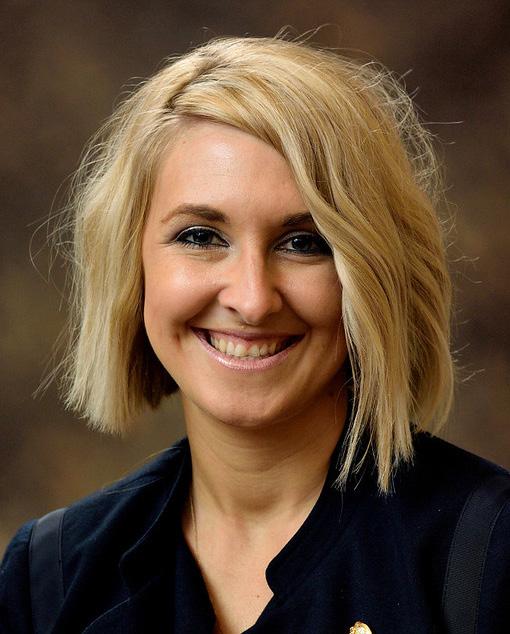
We all know the phrase “hindsight is 20/20.” And, as each and every one of us just weathered that incredibly hard year on the calendar, I think there’s much we could all say about the last 12 months. Missteps, mistakes, and misunderstandings aplenty, but adaptions, improvements, and ample time for reflection were silver linings in there, too. The year 2020 probably didn’t feel like much of a gift, but it did show us all a thing or two about what we are made of and gave us a new appreciation for our resourcefulness and flexibility. At least, that’s what 2020’s hindsight taught me.
I’m not a person for New Year’s resolutions, but I am someone who whole-heartedly gets behind a fresh start. Let’s leave the frustrations of 2020 behind and take those silver linings and apply them to new visions, new energy, and new momentum that we can take into this new year.
Speaking of new, there’s a soybean for that! I think you will enjoy reading about ISA’s work and the checkoff’s investment in several new usage projects that are bringing soybeans into the world of sealants and adhesives (page 6).
We are tackling the topic of agtech this month and our cover story on the University of Illinois’ Research Park looks at how they are finding the farmer’s right fit for on-farm agtech solutions (page 12).
And this issue shows off ISA’s resourcefulness, too. When trade teams could no longer come to Illinois because of COVID-19, we took the farmer to them, virtually of course (page 22).
There’s a lot to be said about innovation, new thinking, and technology improvements happening on farm and in the soybean industry. I hope this issue encourages you to embrace the new. Whether that’s starting a new conservation practice on your farm this year, deciding to plant soybeans earlier than your corn, purchasing that new tech tool for your acres, or simply reading this issue and taking a look at the new ideas and happenings occurring all around us these days at your state soybean association.
It’s a new year and a new ISA. We are focused on the needs of the 43,000 Illinois soybean farmers we are honored to serve, and we are amped up about 2021 and all of the possibilities a fresh new start presents.
What’s a fresh start look like on your farm this year? I’d love to know. Send me a note at ilsoy@ilsoy.org.
RACHEL PEABODY Editor Illinois Soybean Association
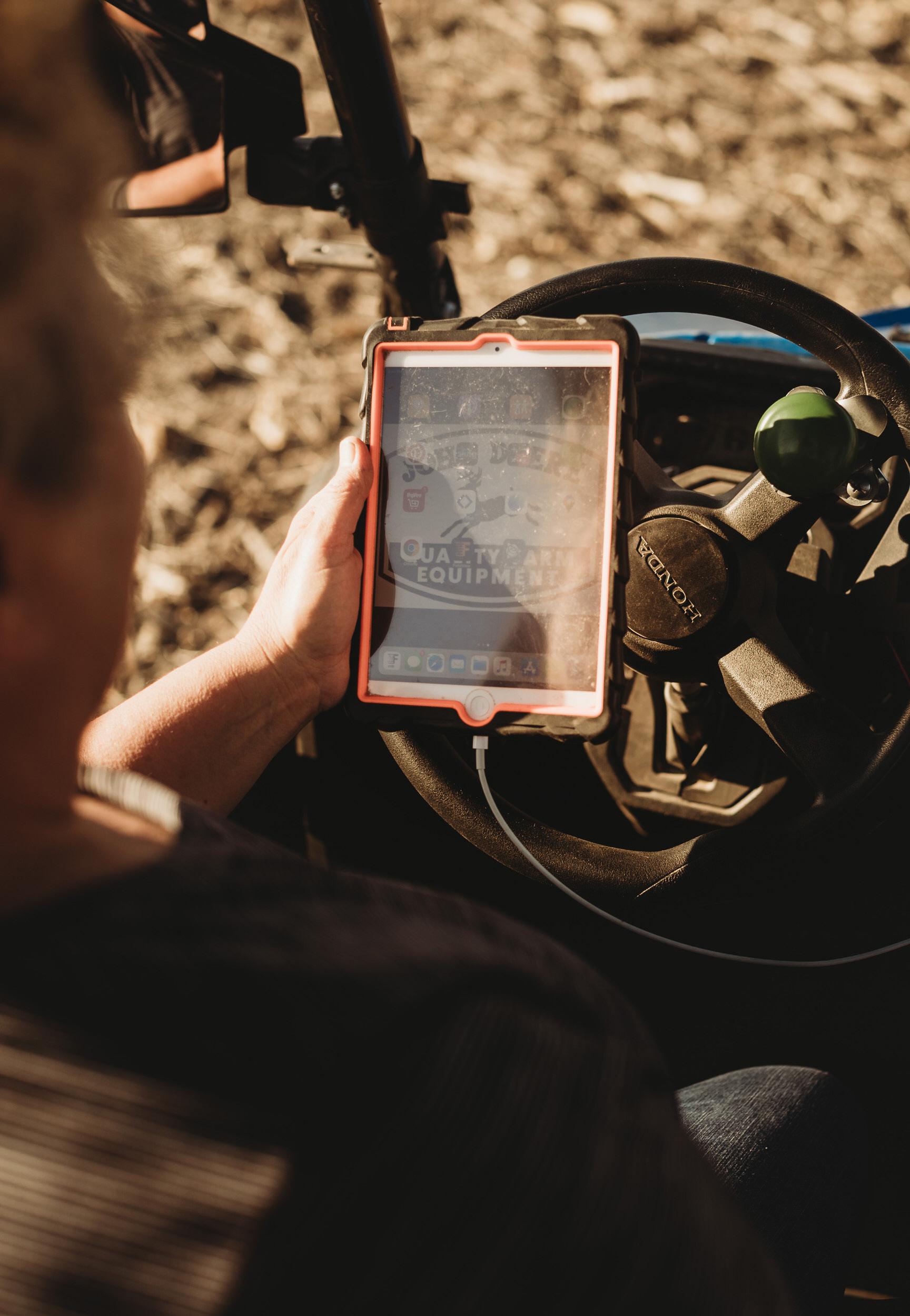
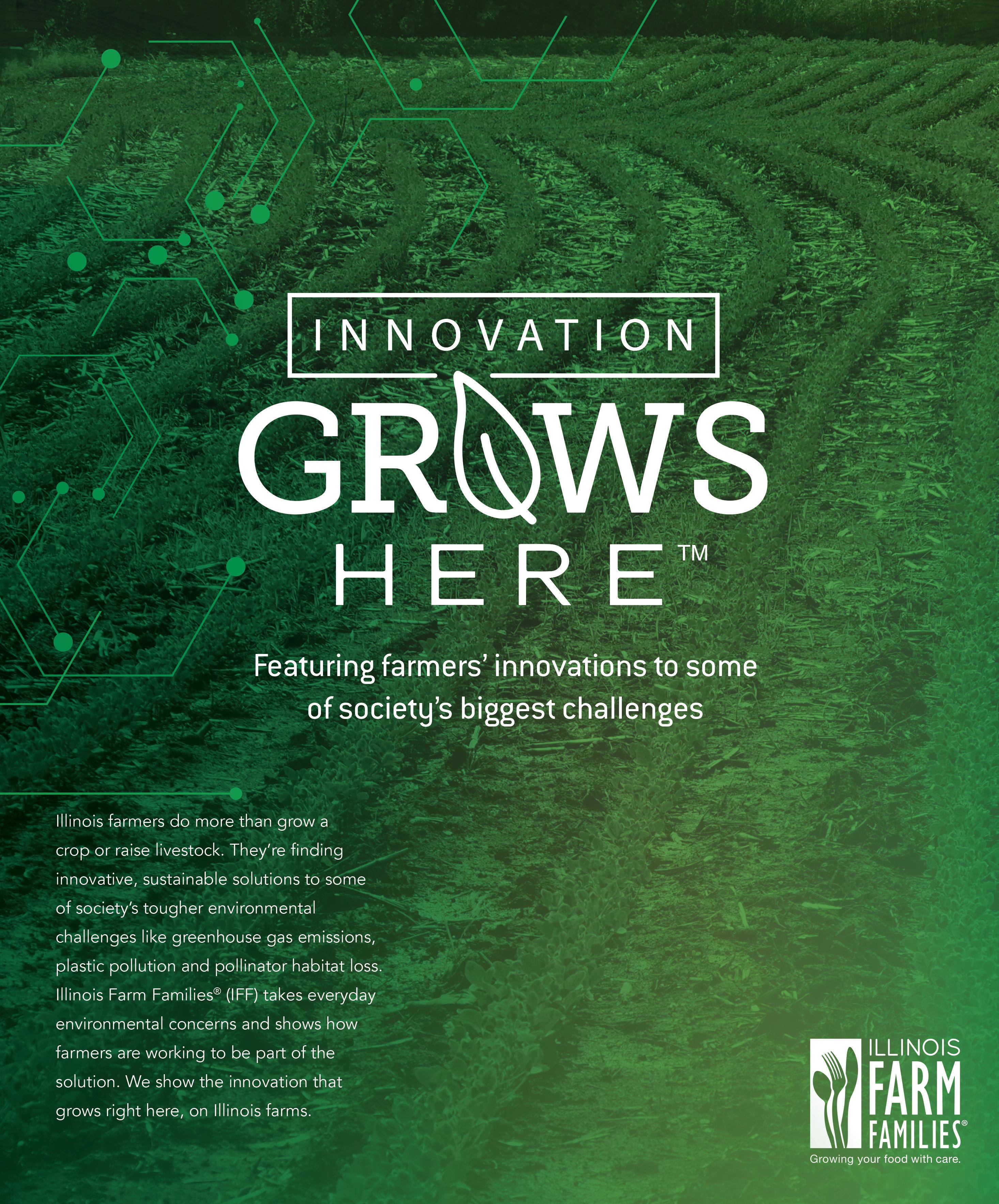
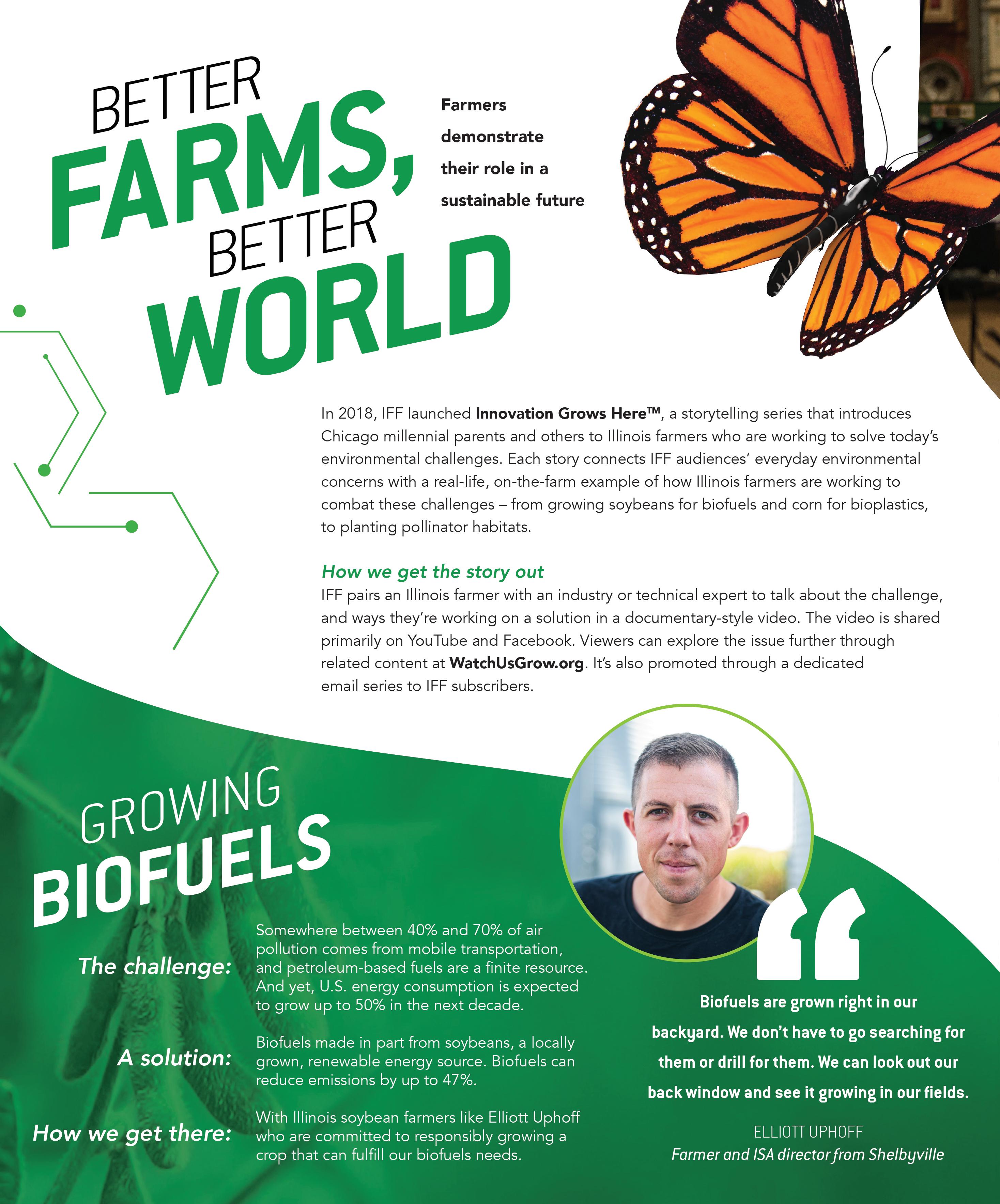
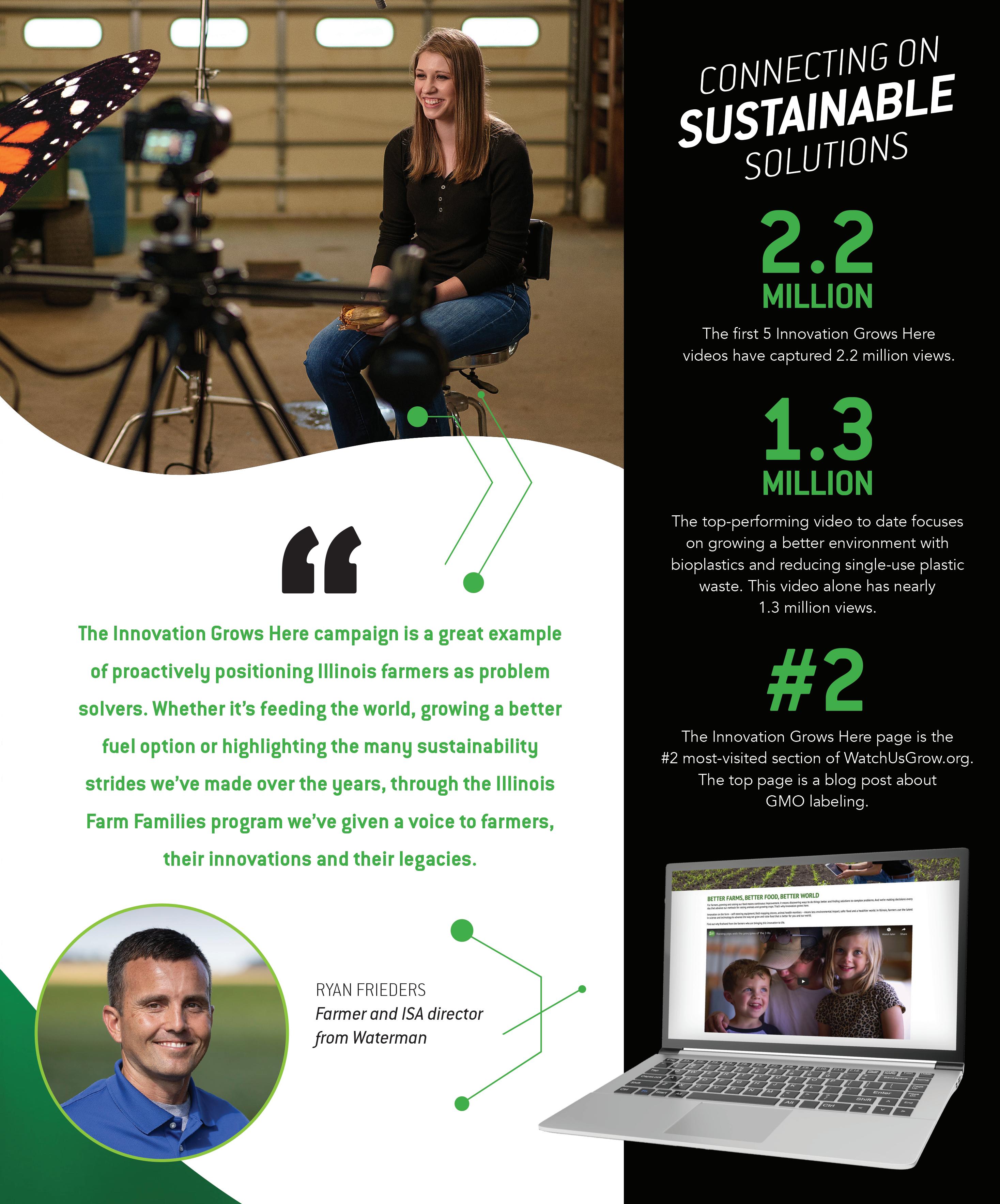
Funded by the Illinois Soybean Checkoff
